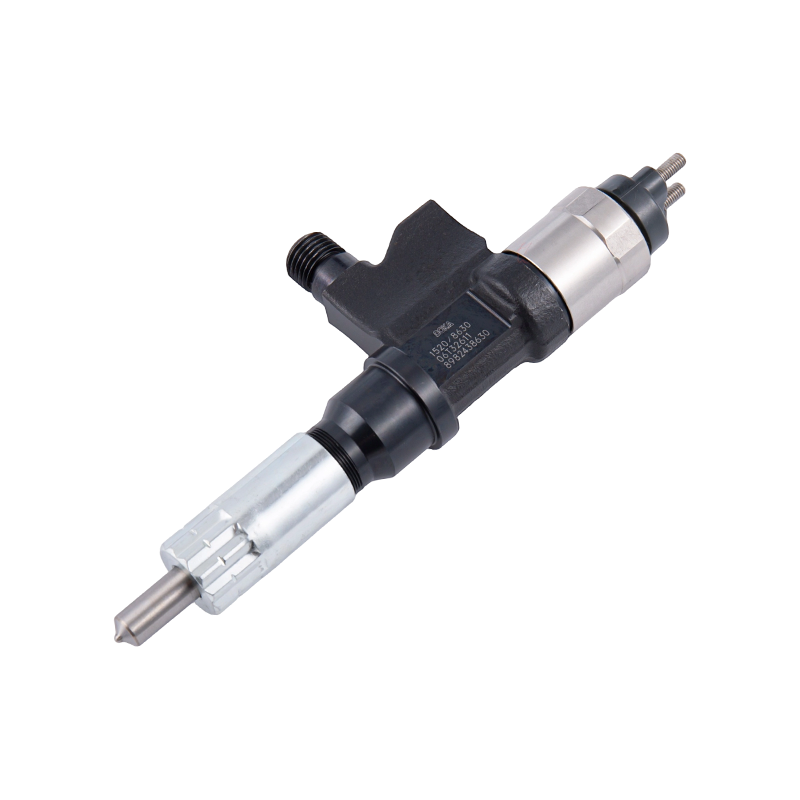News
Excellent product with exquisite craftsmanship.
A piezoelectric injector is a high-speed fuel injector that uses a piezoelectric actuator (a stack or single crystal element) to move internal valve components with extremely fast response and fine positional control. These injectors appear most often in common rail diesel systems and in some gasoline direct-injection setups where precise, multi-event injection and very short opening times improve combustion, emissions, and noise characteristics.

A piezoelectric injector contains several tightly integrated parts. The key elements are the piezo actuator, the hydraulic control chamber, the needle valve assembly, the nozzle, a return spring, and electrical connectors for the driver. The actuator sits opposite a small hydraulic piston or directly against the needle's control surface; applying voltage to the piezo element changes its length, which in turn modifies pressure inside the control chamber and moves the needle.
A piezo actuator is a ceramic stack made of many thin layers. When the driver applies a voltage, the stack expands or contracts by fractions of a millimeter. That tiny mechanical stroke becomes precise, high-speed movement at the needle through hydraulic amplification or direct mechanical coupling.
The actuator changes pressure in a control chamber that sits above the injector needle. When control pressure drops, the main fuel pressure pushes the needle off its seat and fuel flows through nozzle holes. Re-applying control pressure closes the needle quickly. This hydraulic amplification lets a small piezo stroke control a much larger needle displacement and flow change.
Below is a practical sequence showing how a piezo injector creates a single injection event. The timing and voltages are controlled by the engine control unit (ECU) and a dedicated piezo driver module.
The piezo driver is an analog/digital power stage that converts low-voltage ECU commands into high-voltage signals (often tens to hundreds of volts) required by the piezo stack. The driver shapes voltage ramps and plateau times to control needle speed, lift height, and duration. Because piezo ceramics respond faster than solenoid coils, the driver can implement very short injection pulses and tightly controlled multi-pulse strategies.
Pulse shaping controls rise time and fall time of the piezo voltage, affecting how quickly the needle opens and closes. Modern ECU strategies use pre-injection, main injection, and post-injection pulses to optimize ignition, reduce noise, and lower particulate and NOx emissions. Piezo actuators permit sub-microsecond timing resolution compared with slower electromechanical alternatives.
Piezo injectors deliver several tangible benefits for combustion control:
A concise comparison helps select the right injector technology for a specific engine calibration or retrofit program. The table below centers key differences and typical engineering trade-offs.
| Feature | Piezoelectric injector | Solenoid injector |
| Response time | Faster | Slower |
| Pulse control | High resolution | Lower resolution |
| Cost | Higher | Lower |
| Driver complexity | High (requires high-voltage driver) | Lower (simple current drive) |
Diagnosing piezo injectors requires attention to both electrical drive signals and hydraulic response. Common failure modes include piezo stack degradation, electrical connector faults, internal leakage in the control chamber, and nozzle clogging. Detect these faults with pattern analysis of injection quantity, misfire detection, driver error codes, and high-resolution oscilloscope traces of the driver voltage/current waveforms.
When servicing systems with piezo injectors, handle electrical connections carefully and follow manufacturer torque and cleanliness specifications. Calibration at the ECU level may require injector characterization data such as opening delay, close delay, and mass per pulse across a range of pulse widths. Maintain clean fuel, correct filtration, and attention to rail pressure stability to preserve repeatable injection performance.
Piezoelectric injectors offer superior timing precision, faster response and better control for multi-pulse strategies compared with older solenoid designs. They require compatible high-voltage drivers, careful electrical and hydraulic diagnostics, and robust fuel cleanliness. For calibration-driven improvements in emissions and noise, piezo injectors provide a flexible toolset for advanced combustion control.